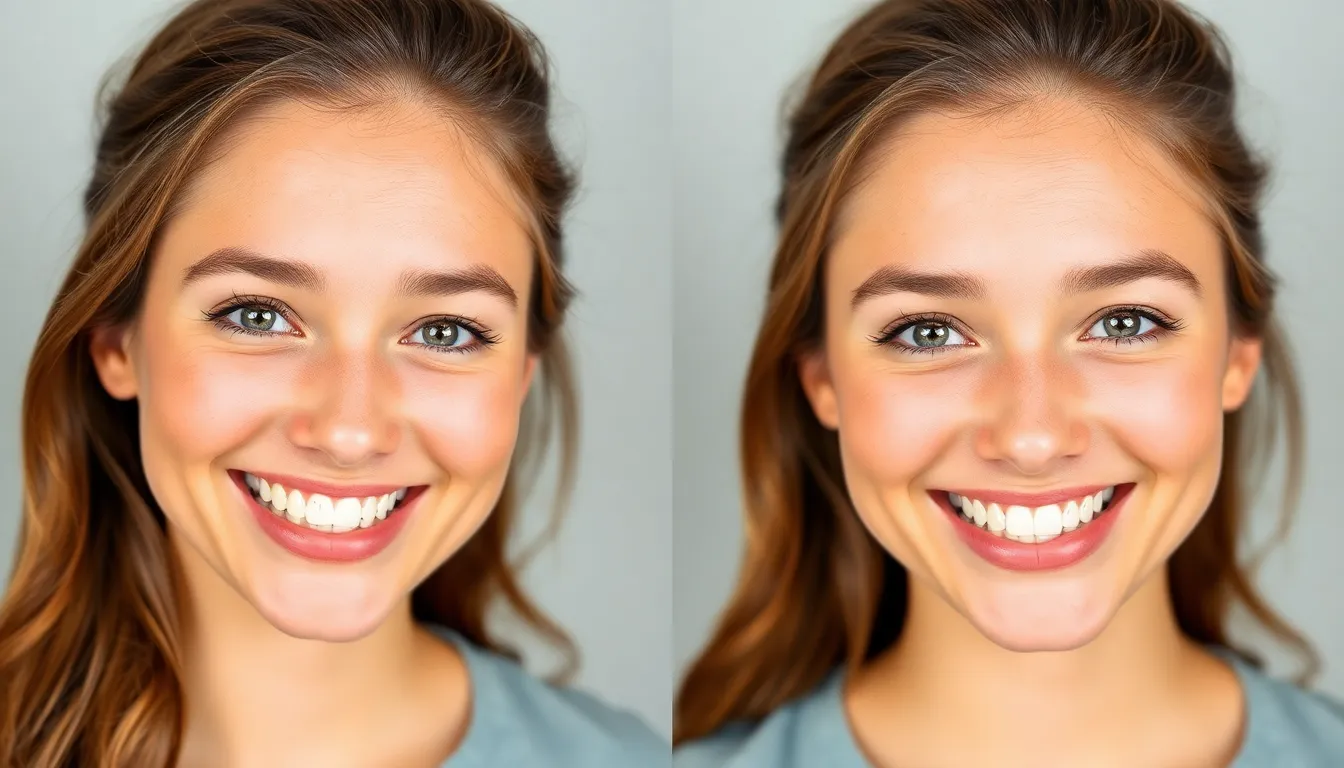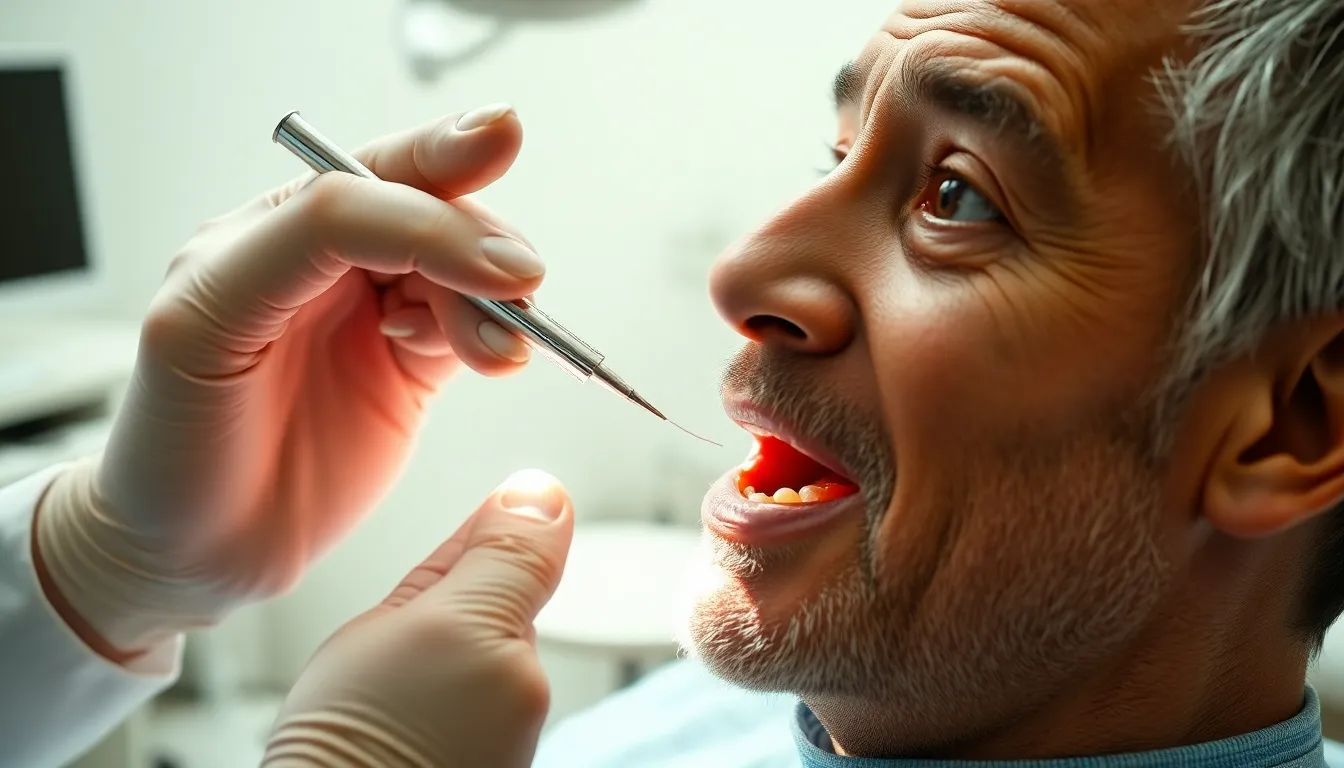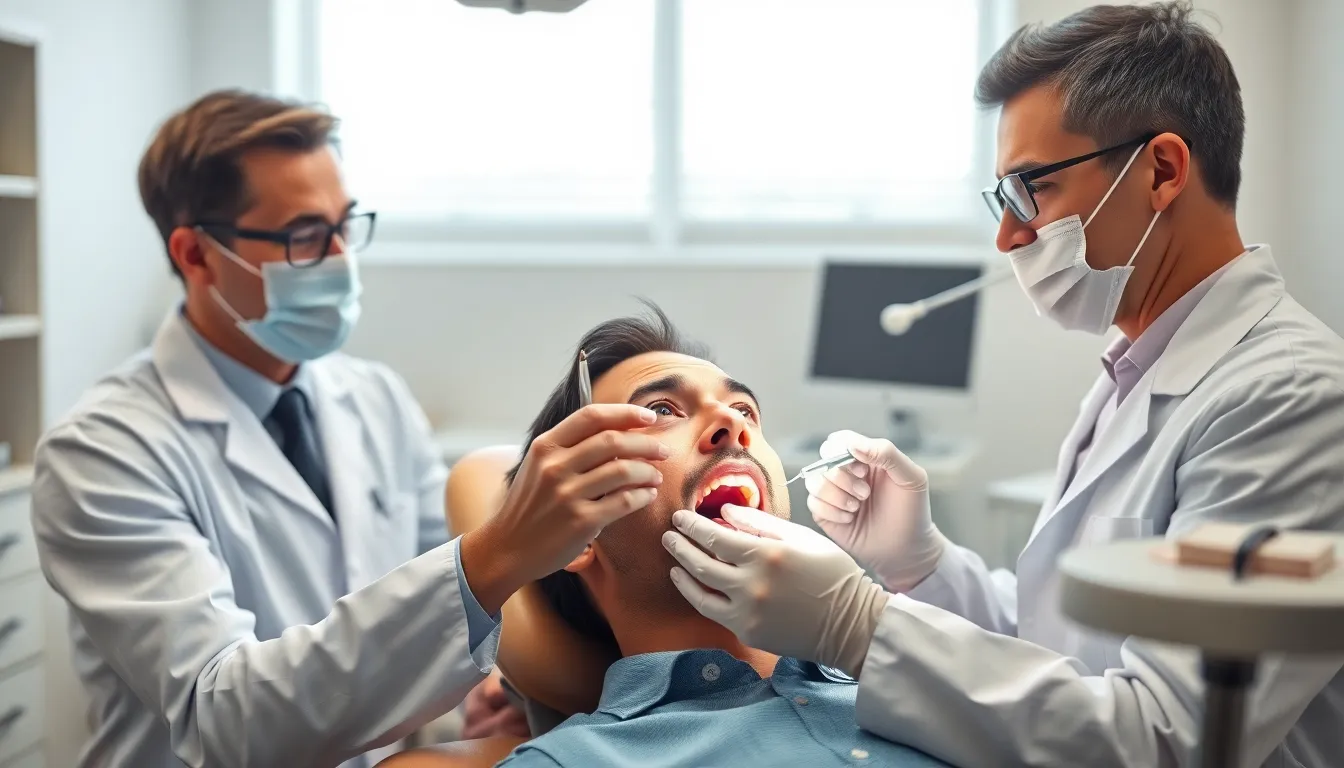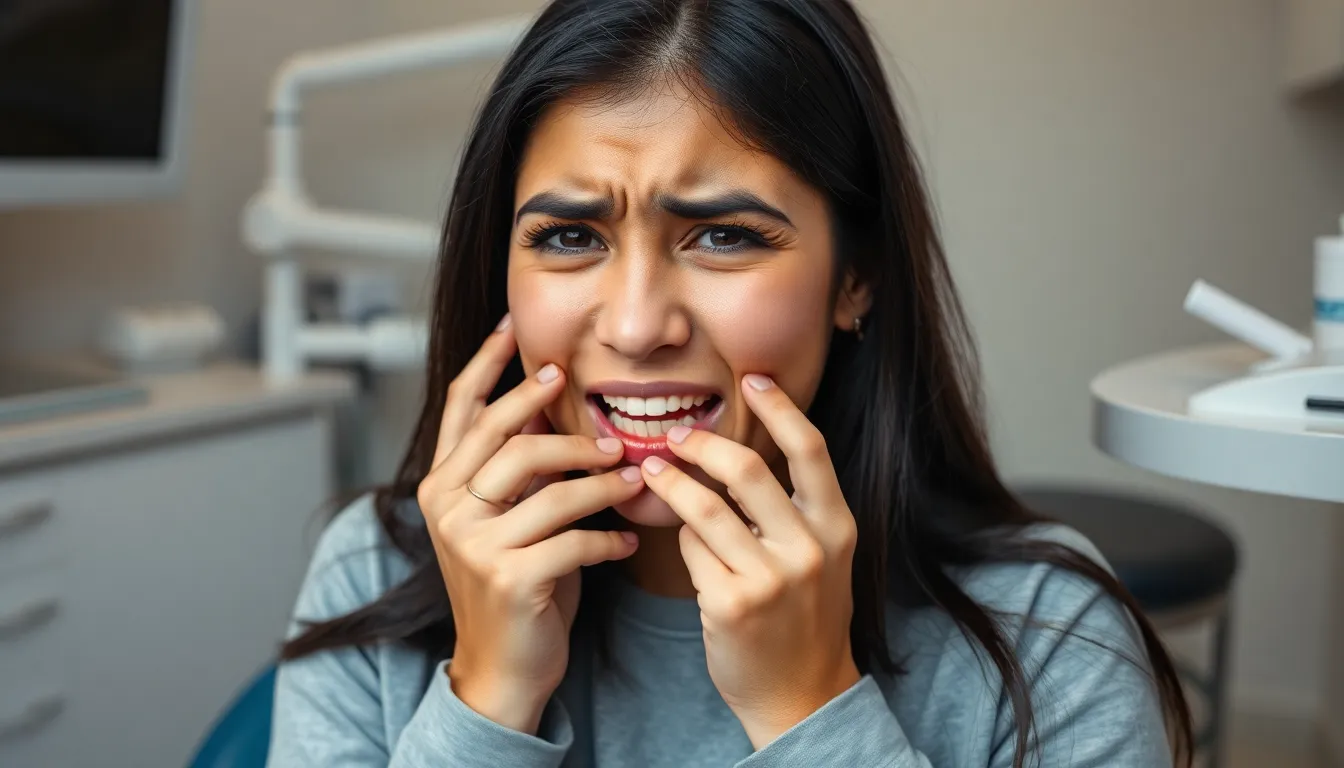Are you wondering what an overbite actually looks like in real life? An overbite occurs when your upper teeth overlap your lower teeth more than normal, affecting both your smile and oral health.
When identifying overbite examples, it’s helpful to understand the difference between dental and skeletal versions. A dental overbite involves misaligned teeth, while a skeletal overbite relates to jaw structure issues. You might recognize common examples in celebrities like Tom Cruise (before treatment) or even cartoon characters like Bugs Bunny, who famously displays an exaggerated overbite that’s become part of his iconic look.
Understanding Overbite: Definition and Causes
An overbite refers to the vertical overlap where your upper front teeth extend over the lower front teeth when your back teeth are closed together. This common dental condition affects millions of people worldwide and varies in severity from barely noticeable to quite pronounced.
Normal vs. Excessive Overbite
Normal overbites measure between 2-4mm or about 30% overlap of the lower teeth by the upper teeth. Anything beyond this range is considered excessive and may require treatment. Dental professionals use exact measurements during examinations to determine if your overbite falls within healthy parameters. Excessive overbites often cause teeth to wear unevenly, create jaw pain, and sometimes lead to difficulty chewing or speaking clearly.
Dr. Todd B. Harris notes, “I’ve seen patients who didn’t realize their chronic headaches were related to their untreated overbite. Once we addressed the dental issue, their pain symptoms significantly decreased.”
Common Causes of Overbite
Genetics plays a primary role in overbite development, with jaw structure and tooth alignment often inherited from parents. Childhood habits contribute significantly to overbite formation, including:
- Prolonged thumb-sucking beyond age 3-4
- Extended pacifier use into preschool years
- Bottle feeding past the recommended age
- Tongue thrusting against teeth during swallowing
Underdeveloped jawbones sometimes create insufficient space for teeth to align properly, forcing them to crowd and overlap. Missing teeth create gaps that allow remaining teeth to shift position, potentially worsening an overbite condition.
Recognizing Different Types of Overbite

Overbite is a dental condition where your upper teeth overlap the lower teeth more than normal. Understanding the different types helps identify the exact issue you’re dealing with and the appropriate treatment options.
Vertical Overbite Examples
A vertical overbite involves the upper teeth extending downward over the lower teeth. Deep bite is a common vertical overbite condition where your upper front teeth excessively overlap the lower front teeth. This overlap can cause important problems including tooth wear, gum recession, and temporomandibular joint disorders (TMJ).
In cases of severe vertical overbite, the upper teeth cover the lower teeth by more than 9 millimeters. This extensive overlap creates functional problems in your daily life, making speaking and chewing difficult. Dr. Todd B. Harris often points out that patients with severe vertical overbites frequently report discomfort when trying to close their mouths completely.
“I recently treated a patient who’d lived with a deep bite for decades,” shares Dr. Harris. “She didn’t realize her chronic jaw pain and recurring headaches stemmed from her overbite until we corrected the alignment.”
Horizontal Overbite (Overjet) Examples
Horizontal overbite, commonly known as overjet, occurs when your upper front teeth protrude significantly beyond the lower teeth. This condition is sometimes referred to as “buck teeth” and impacts not only facial appearance but also leads to uneven tooth wear and jaw discomfort.
Crossbite represents another horizontal alignment issue where the upper teeth bite inside the lower teeth. This misalignment causes jaw asymmetry and creates difficulties in biting and chewing food properly. Dental professionals distinguish between dental overbites involving misaligned teeth and skeletal overbites caused by jawbone irregularities, with the latter typically requiring more complex correction procedures.
Open bite can occur alongside overjet, creating a vertical gap between your upper and lower teeth even when your mouth is closed. This combination of conditions often complicates treatment approaches but remains correctable with proper dental intervention.
Real-Life Overbite Examples in Adults

Overbites in adults present a common orthodontic condition where upper front teeth excessively overlap the lower teeth, affecting both function and aesthetics. These vertical overlaps range from mild to severe cases, each with unique challenges and treatment approaches.
Celebrity Examples of Overbite
Many celebrities have embraced their overbites or sought correction to enhance their smiles. Tom Cruise famously corrected his noticeable overbite with braces later in his career, transforming his smile while maintaining his signature charisma. Many Hollywood figures undergo orthodontic treatments to address overbites, though these transformations aren’t always publicly documented in clinical literature. Before-and-after images from orthodontic clinics showcase dramatic smile improvements where bite alignment corrections enhance facial harmony. Dr. Todd B. Harris notes, “Celebrity smile transformations often inspire patients to seek treatment for their own overbites, realizing that correction is possible at any age.”
How Overbites Affect Facial Structure
Overbites significantly influence your overall facial appearance and structural balance. Untreated overbites commonly cause chin protrusion or retrusion, creating an imbalanced profile that affects facial symmetry. The relationship between your lips and teeth becomes visibly disproportionate when an overbite forces the upper lip to protrude. Jaw pain frequently accompanies severe overbites due to improper alignment, leading to uneven tooth wear and temporomandibular joint strain. Patients with corrected overbites report dramatic improvements in facial harmony and confidence.
Sarah, a 19-year-old patient, experienced remarkable changes after undergoing orthognathic surgery combined with braces to address her severe overbite. Her treatment not only resolved functional issues like difficulty chewing but also dramatically improved her facial symmetry and profile balance. Large overbites combined with upper arch spacing require comprehensive approaches including braces, elastics, and specialized orthodontic appliances to achieve optimal results.
Overbite Examples in Children and Teens

An overbite in children and teens occurs when upper front teeth vertically overlap lower front teeth more than normal. This common orthodontic condition ranges from mild to severe cases and can impact both function and appearance during crucial developmental years.
Early Signs of Developing Overbite
Recognizing overbite signs early enables more effective intervention in young patients. Upper front teeth that noticeably protrude beyond the lower teeth represent the most visible indicator of a developing overbite. Speech difficulties, particularly lisping or trouble pronouncing certain sounds, often signal tooth misalignment affecting normal language development. Children with overbites frequently experience biting and chewing issues, making it challenging to properly bite into food or maintain even chewing patterns.
Frequent mouth breathing connects closely with jaw alignment problems and can exacerbate overbite conditions. Jaw pain or discomfort, especially after eating, indicates potential stress from misalignment that shouldn’t be ignored. Genetics plays a important role in overbite development, but prolonged habits like thumb sucking, pacifier use beyond age 3, tongue thrusting, and teeth grinding contribute substantially to alignment issues in children.
Dr. Todd B. Harris notes, “Parents often miss early overbite signs because they assume their child will ‘grow out of it.’ Unfortunately, waiting typically complicates treatment. I’ve seen countless cases where early intervention at ages 7-8 prevented more invasive procedures later.”
When Intervention Is Necessary
Intervention becomes essential when overbites cause functional problems or risk long-term damage to oral structures. Untreated severe overbites lead to abnormal wear of tooth enamel, creating permanent damage to tooth surfaces. Damage to soft palate tissues occurs when lower teeth constantly press against or bite into the roof of the mouth.
Speech and eating difficulties progressively worsen without treatment, affecting a child’s quality of life and social interactions. Children with pronounced overbites face increased risk of trauma to protruding upper front teeth during falls or sports activities. Many parents seek treatment after noticing their child experiencing social or psychological concerns related to appearance, which can impact self-confidence during formative years.
Orthodontic evaluation starting around age 7 allows for catching bite issues before jaw growth completes. Early treatment approaches include interceptive orthodontics using appliances like retainers, the Herbst Appliance, or Carriere Distalizer to guide proper alignment during growth periods.
Treatment Options for Different Overbite Examples

Treatment options for overbites vary depending on the type and severity of the condition. Proper diagnosis distinguishing between dental and skeletal causes is essential for determining the most effective treatment approach.
Braces and Aligners for Mild Cases
Traditional braces and clear aligners offer effective answers for mild to moderate overbites, particularly dental overbites. These orthodontic devices gradually shift teeth into proper alignment, correcting excessive overlap without the need for surgery. Clear aligners provide a nearly invisible alternative to metal braces, making them popular among adults seeking correction. Treatment typically takes 12-24 months depending on the complexity of your case. Dr. Todd B. Harris notes, “Many of my patients are surprised by how quickly they adjust to wearing braces or aligners, and they’re consistently thrilled with the functional improvements beyond just aesthetic changes.”
A recent patient, Sarah, came in with a 5mm dental overbite that caused her to bite her lower gums occasionally. After 18 months of clear aligner therapy, her overbite was reduced to a normal 2mm overlap, eliminating her discomfort and improving her smile confidence.
Surgical Interventions for Severe Cases
Severe overbites, especially those with skeletal discrepancies, often require orthognathic surgery combined with orthodontic treatment. This surgical approach repositions the jaws to achieve functional bite alignment and facial balance. Before surgery, orthodontic preparation aligns the teeth properly within each jaw. The surgical procedure itself may involve moving the upper jaw backward, the lower jaw forward, or both, depending on your exact skeletal pattern. Post-surgical orthodontic treatment finalizes tooth alignment for optimal results.
Recovery from jaw surgery typically takes 6-12 weeks, with full healing and adaptation occurring over 6-12 months. Patients with severe skeletal overbites who undergo this comprehensive treatment experience important improvements in chewing function, speech clarity, and facial profile. The combination of surgical intervention and orthodontic care addresses both the underlying structural issues and the dental alignment, providing long-term stability that cannot be achieved through orthodontics alone.
Living With an Overbite: Practical Considerations

Daily life with an overbite presents unique challenges that extend beyond cosmetic concerns. People with overbites face practical issues that impact fundamental activities like speaking, eating, and maintaining oral health, especially in cases where the upper teeth overlap the lower teeth by more than the normal 1-3 mm.
Speech and Eating Challenges
Communication difficulties often arise for those with moderate to severe overbites. The misalignment between upper and lower teeth can interfere with proper tongue placement, affecting the pronunciation of certain sounds that require precise tongue-to-teeth contact. Many patients report struggling with clear articulation, particularly with sounds like “s,” “z,” and “th.” Eating presents another set of obstacles as the improper alignment makes biting and chewing certain foods challenging. Front teeth may contact food at awkward angles, leading to inefficient chewing and potential discomfort during meals.
Dr. Todd B. Harris notes, “Many of my patients with important overbites describe frustration when eating apples, sandwiches, or other foods that require a clean bite. Their teeth simply don’t meet in a way that allows for comfortable, efficient eating, which can make social dining situations stressful.”
Oral Hygiene Adaptations
Maintaining proper oral hygiene becomes more complicated with an overbite due to the creation of hard-to-reach areas between overlapping teeth. These spaces trap food particles and promote plaque buildup, increasing risks of tooth decay, enamel erosion, and gum disease if not addressed with specialized cleaning techniques. Standard brushing often misses these critical areas, requiring adaptations to your daily oral care routine.
Specialized tools like interdental brushes, water flossers, and angled toothbrushes help reach these problematic spots. Patients with overbites typically benefit from more frequent dental cleanings to prevent complications in areas where self-cleaning is difficult.
Emma, a patient who lived with a severe overbite for years before seeking treatment, shares: “I couldn’t understand why I kept getting cavities even though brushing twice daily until my dentist showed me how my overbite created pockets where plaque accumulated. Using a water flosser completely changed my oral health situation, though eventually correcting my overbite through orthodontic treatment provided the most important improvement.”
Left untreated, severe overbites can lead to chronic jaw pain, temporomandibular joint disorders, recurring headaches, and even premature wear on certain teeth. The resulting uneven distribution of biting forces places excessive stress on front teeth, potentially leading to chips, cracks, or premature wear that compromises both function and appearance.
Conclusion
Understanding overbites goes beyond recognizing a cosmetic concern—it’s about addressing potential oral health issues that can impact your daily life. Whether you’re dealing with a dental or skeletal overbite the severity determines your treatment path.
From celebrities to cartoon characters overbites appear in various forms around us. Early detection particularly in children offers the best chance for successful correction through braces clear aligners or sometimes surgery in more severe cases.
Don’t ignore symptoms like jaw pain difficulty chewing or speech challenges. With proper treatment you can achieve not just a more balanced smile but improved oral function and comfort. Remember that addressing an overbite is an investment in your long-term dental health and overall wellbeing.
Frequently Asked Questions
What is an overbite?
An overbite is a dental condition where the upper front teeth excessively overlap the lower teeth. A normal overbite is 2-4mm (about 30% overlap), while anything more is considered excessive. This common condition affects millions of people worldwide and can impact both appearance and oral function.
What causes an overbite?
Overbites are primarily caused by genetics, childhood habits like prolonged thumb-sucking or pacifier use, and underdeveloped jawbones. They can be dental (related to misaligned teeth) or skeletal (related to jaw structure). Most overbites develop during childhood, which is why early intervention is important.
Can an overbite cause headaches?
Yes, untreated overbites can contribute to chronic headaches. According to Dr. Todd B. Harris, improper bite alignment creates tension in jaw muscles that can radiate pain to the head. Many patients report significant reduction in headache frequency and severity after their overbite is corrected through appropriate treatment.
What’s the difference between vertical and horizontal overbites?
A vertical overbite (deep bite) involves upper teeth extending excessively downward over lower teeth, potentially causing tooth wear and TMJ disorders. A horizontal overbite (overjet) occurs when upper front teeth protrude forward beyond lower teeth. Both types affect appearance and function differently but can cause similar long-term problems if severe.
At what age should children be evaluated for an overbite?
Children should have their first orthodontic evaluation around age 7. At this stage, dentists can identify developing overbites and other alignment issues early. Early detection allows for interceptive orthodontics—treatments that guide proper tooth and jaw alignment during growth periods, potentially reducing the complexity of future treatments.
Can adults get overbite treatment?
Absolutely. While childhood is ideal for treatment due to ongoing growth, adults can successfully correct overbites at any age. Adult treatments may take longer and sometimes require more comprehensive approaches, especially for skeletal overbites. Options include braces, clear aligners, and in severe cases, orthognathic surgery combined with orthodontic treatment.
How do clear aligners work for treating overbites?
Clear aligners like Invisalign gradually shift teeth into proper alignment through a series of custom-made transparent trays. For mild to moderate dental overbites, aligners apply strategic pressure to move teeth into correct positions. Treatment typically lasts 12-24 months, with trays being changed every 1-2 weeks as teeth progressively move toward proper alignment.
What problems can an untreated overbite cause?
Untreated overbites can lead to numerous issues including uneven tooth wear, chronic jaw pain, TMJ disorders, recurring headaches, speech difficulties, and challenges with eating certain foods. Severe overbites also create oral hygiene challenges, increasing risks of tooth decay and gum disease due to difficult-to-clean overlapping teeth.
Is surgery always necessary for severe overbites?
No, surgery is typically reserved for severe skeletal overbites where the jaw structure itself needs correction. Many cases, especially dental overbites, can be effectively treated with traditional orthodontic approaches like braces or clear aligners. The necessity for surgery depends on the underlying cause and severity of the overbite.
How can I maintain oral hygiene with an overbite?
Maintaining oral hygiene with an overbite requires special attention to overlapping areas. Use interdental brushes or water flossers to clean between teeth, angle your toothbrush to reach all surfaces, and consider more frequent dental cleanings. Your dentist may recommend specialized cleaning tools based on your specific situation.







